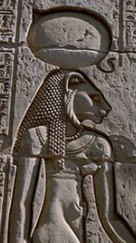 Sekhmet (“The Mighty One”), lioness goddess of ancient Egypt, spread terror with her bloody rampages. Yet she became the protector of kings and a favorite personal goddess of millions of Egyptians.
Sekhmet (“The Mighty One”), lioness goddess of ancient Egypt, spread terror with her bloody rampages. Yet she became the protector of kings and a favorite personal goddess of millions of Egyptians.
Why did Egyptians have a goddess who required such assiduous and even obsessive propitiation? Why did other Egyptian goddesses play roles similar to Sekhmet’s? What explains Sekhmet’s dual nature as destroyer and protector? Why did Egyptians call her the Eye of Ra? Why did she originally appear with an oval disk on her head?
We now have good answers to these questions. But in order to understand them, we need to see why we should think that Sekhmet was Planet Venus. And that requires us to investigate a major case of scientific rejectionism.
Tags: Ancient Egypt, Bastet, Bronze Age catastrophes, Egyptian medicine, Hathor, isis, Mars, Mut, myth, Ra, Sekhmet, Tefnut, Velikovsky, venus
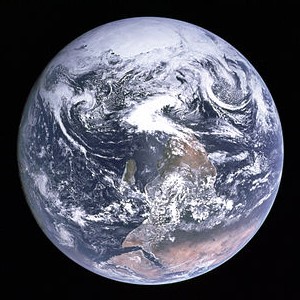 There are good reasons to think that Earth has turned over on various occasions. But who can be surprised that this perception—so removed from everyday experience—seems less than instantaneously persuasive?
There are good reasons to think that Earth has turned over on various occasions. But who can be surprised that this perception—so removed from everyday experience—seems less than instantaneously persuasive?
The good reasons include telling evidence in narrative testimony and correctly interpreted myths of the ancients, embedded patterns in ancient cultures that give evidence of inversions, and the insights and arguments of two formidable researchers. Now we can: add new reasons that strengthen the case; specify the approximate dates of four inversions; extend the theory to the five great mass extinctions of prehistory; comprehend that Earth is actually prone to inversion; and point to where to find more evidence. Understanding inversions helps us correct errors in interpreting past planetary and Earth science while providing clues relevant to climate change.
Tags: Ancient China, Archer Yi, Bronze Age catastrophes, Earth, geomagnetism, inversion of Earth, magnetic reversals, Mars, mass extinctions, Pacific Basin, terrestrial, tippe top, Velikovsky, venus, Warlow
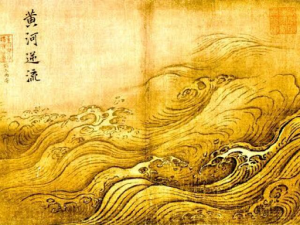 What reality lay behind ancient China’s flood legends? Who was the Yellow Emperor? Who was Archer Yi, what was his vermilion bow, how did he shoot down nine of ten suns, and why were there ten suns in the first place?
What reality lay behind ancient China’s flood legends? Who was the Yellow Emperor? Who was Archer Yi, what was his vermilion bow, how did he shoot down nine of ten suns, and why were there ten suns in the first place?
We now know the answers to these and other questions about ancient China. These answers can lead us to a new understanding of Chinese history, of the worldwide Bronze Age catastrophes, and of the history of climate change. (Ma Yuan, The Yellow River Breaches Its Course, Wikimedia Commons)
Tags: Ancient China, archaeoastronomy, Archer Yi, Bronze Age catastrophes, climate change, Jingwei bird, Liangzhu, Longshan, Mars, myth, Shang, stone ladders, Taidong, Taosi, Teotihuacan, tsunamis, Velikovsky, venus, Western Zhou, Xia, Yellow Emperor, 灾难和气候变化中国古代
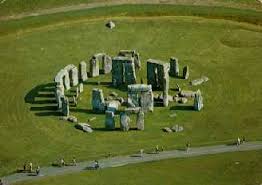 One of the world’s most famous monuments, Stonehenge abounds in mysteries and anomalies.
One of the world’s most famous monuments, Stonehenge abounds in mysteries and anomalies.
Why was Stonehenge built in the first place? Why was it radically transformed shortly before 2500 BC into a masterpiece of megalithic architecture? What explains the intricate, changing patterns of the stones over time? Why the extraordinary effort?
We now have answers to these and other questions, but to get to them we need to set aside preconceptions and come to terms with something that isn’t simple.
Tags: archaeoastronomy, Bronze Age catastrophes, Durrington Walls, eclipses, interpretation of myths, inversions, megalithic, Silbury Hill, Stonehenge, Velikovsky, venus
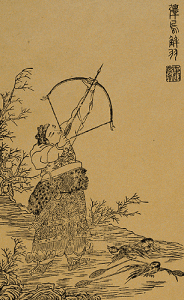 If we can interpret certain ancient myths correctly, they could lead us to more accurate and penetrating views of the history of the Earth and the solar system. They might teach us about the forces at work and explain anomalies bequeathed to us by a long-hidden past. But how can we interpret these myths, the products of minds so far removed from ours? How do we know which interpretation is correct, if any? Are we doomed to speculate without ever achieving certainty?
If we can interpret certain ancient myths correctly, they could lead us to more accurate and penetrating views of the history of the Earth and the solar system. They might teach us about the forces at work and explain anomalies bequeathed to us by a long-hidden past. But how can we interpret these myths, the products of minds so far removed from ours? How do we know which interpretation is correct, if any? Are we doomed to speculate without ever achieving certainty?
Here we will interpret two Bronze Age myths to illustrate the high scientific value such myths might contain. We will also see how easy it can be to understand a myth once the right interpretation becomes available.
Tags: Ancient China, Ancient Greece, Bronze Age catastrophes, comets, earth science, history of solar system, interpretation of myths, Jupiter, myths, philosophy of science, planetary science, Velikovsky, venus, Zeus
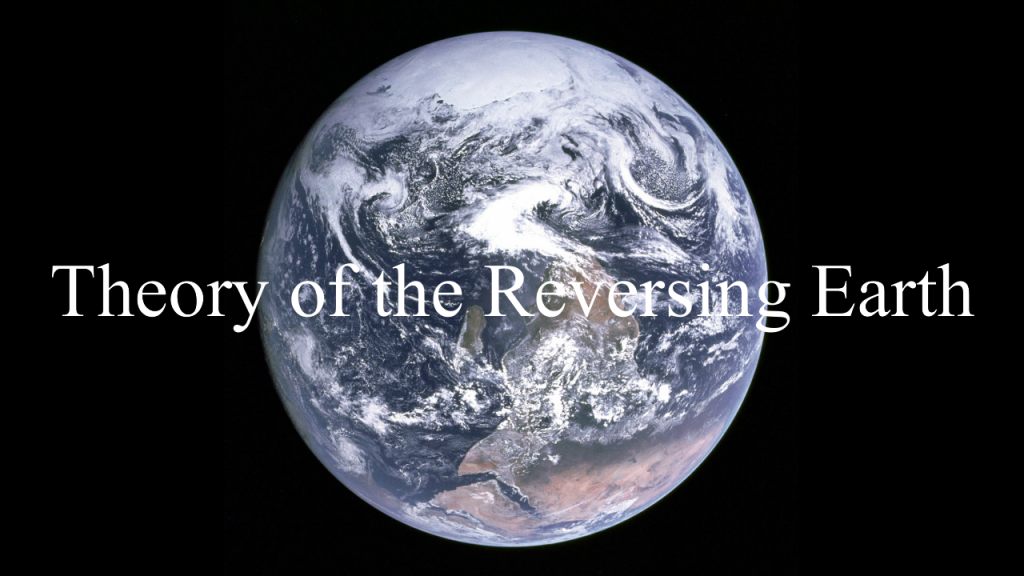 The Theory of the Reversing Earth was a key component of Immanuel Velikovsky’s Venus theory in which he contended that close passages of Venus caused Earth to topple over four times during the Bronze Age catastrophes. Now we have a Revised Venus Theory that corrects inadequacies of the original theory and provides a cause of the inversions as well as approximate dates (2200, 1628, 1210, and 820 BC), an array of new evidence, and a link to the great mass extinctions of prehistory. Viktoria Nagudi interviews Kenneth J. Dillon of Scientia Press. 9 Likes, 0 Dislikes.
The Theory of the Reversing Earth was a key component of Immanuel Velikovsky’s Venus theory in which he contended that close passages of Venus caused Earth to topple over four times during the Bronze Age catastrophes. Now we have a Revised Venus Theory that corrects inadequacies of the original theory and provides a cause of the inversions as well as approximate dates (2200, 1628, 1210, and 820 BC), an array of new evidence, and a link to the great mass extinctions of prehistory. Viktoria Nagudi interviews Kenneth J. Dillon of Scientia Press. 9 Likes, 0 Dislikes.
Theory of the Reversing Earth
Tags: Archer Yi, Bronze Age catastrophes, Immanuel Velikovsky, Karnak, magnetic reversals, Peter Warlow, Re Horakhty, Venus theory
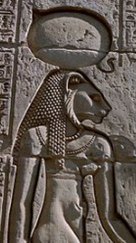 In his Worlds in Collision (New York: Macmillan, 1950), Immanuel Velikovsky argued that Venus emerged as a red-hot comet from Jupiter and passed Earth every 52 years, causing the Bronze Age catastrophes, before settling into its current orbit. His claim set off a controversy in which his theory was rejected and stigmatized. But over the years, new findings have changed the picture. Here are eight new reasons to accept a Revised Venus Theory.
In his Worlds in Collision (New York: Macmillan, 1950), Immanuel Velikovsky argued that Venus emerged as a red-hot comet from Jupiter and passed Earth every 52 years, causing the Bronze Age catastrophes, before settling into its current orbit. His claim set off a controversy in which his theory was rejected and stigmatized. But over the years, new findings have changed the picture. Here are eight new reasons to accept a Revised Venus Theory.
Tags: Archer Yi, Athena, Bronze Age catastrophes, catastrophism, earth science, Immanuel Velikovsky, interpretation of myths, Martian Theory of Mass Extinctions, Metis, Outer Solar System Origin of the Terrestrial Planets, planetary science, Poseidon, Revised Venus Theory, The Knowable Past, Theory of the Reversing Earth, tidal theory of the planets, Worlds in Collision
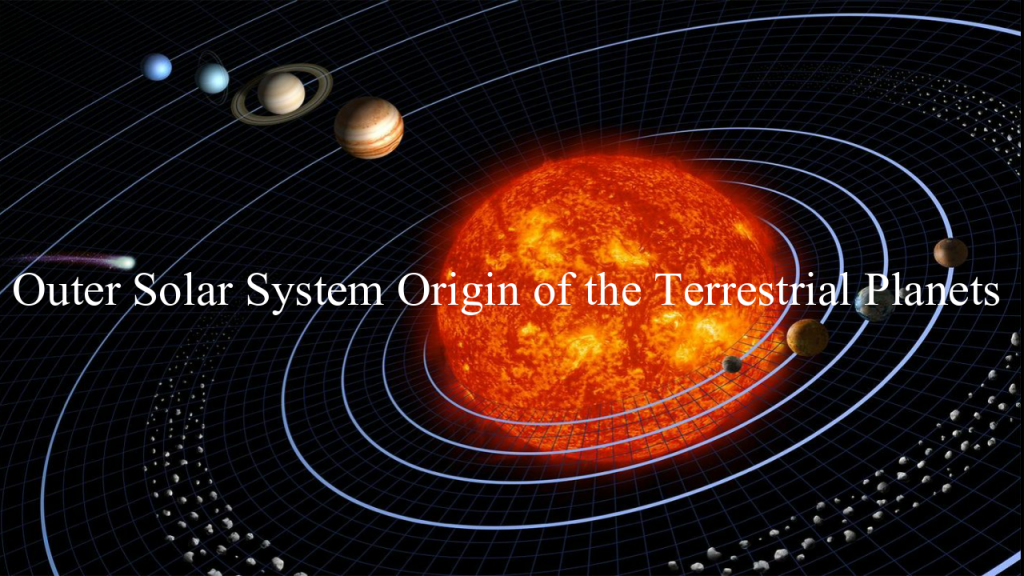
Historian and scientific researcher Kenneth J. Dillon discusses his theory The Outer Solar System Origin of the Terrestrial Planets (OSSO). OSSO explains how Mercury, Earth, the Moon, and Mars originated outside the orbit of Saturn, then were pulled inward by Jupiter’s gravity. Tidal friction heated them to incandescence, then they tidally locked to Jupiter and were separated, moving as comets into their present orbits. See also https://www.scientiapress.com/outer-solar-system-origin.
Outer Solar System Origin of the Terrestrial Planets
Tags: Bronze Age catastrophes, Capture theory, Immanuel Velikovsky, inner solar system, Jupiter, Mars, Mercury, moon, Oceanus Procellarum, planetary science, terrestrial, tidal locking, venus
Historia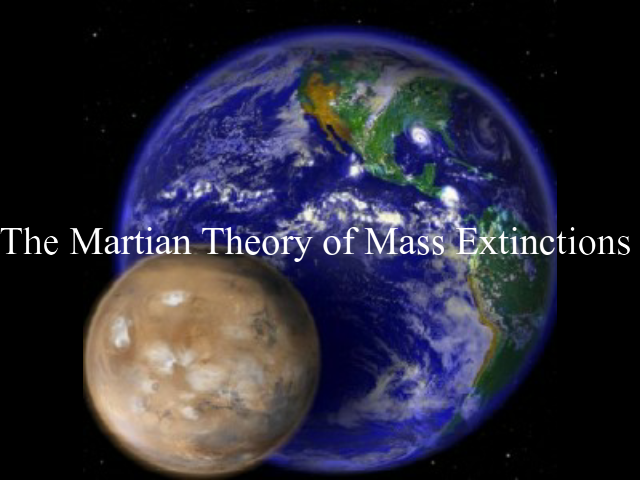 n and scientific researcher Kenneth J. Dillon explains his The Martian Theory of Mass Extinctions. For most of the past 4 billion years, the orbits of Mars and Earth were more eccentric than at present, and they intersected. The closest approaches of Mars led to the great mass extinctions of prehistory, while more distant approaches might account for many minor extinctions as well. The theory shows why the extinctions were serial events, why they differed in size, how they shaped the surface of Mars, and what made them so terrifically devastating. For further information, see https://www.scientiapress.com/extinctions.
n and scientific researcher Kenneth J. Dillon explains his The Martian Theory of Mass Extinctions. For most of the past 4 billion years, the orbits of Mars and Earth were more eccentric than at present, and they intersected. The closest approaches of Mars led to the great mass extinctions of prehistory, while more distant approaches might account for many minor extinctions as well. The theory shows why the extinctions were serial events, why they differed in size, how they shaped the surface of Mars, and what made them so terrifically devastating. For further information, see https://www.scientiapress.com/extinctions.
The Martian Theory of Mass Extinctions
Tags: Bronze Age catastrophes, Chicxulub, Cretaceous-Paleogene, Deccan Traps, Elysium Mons, inner solar system, Mars, mass extinctions, mass wasting, Olympus Mons, Tharsis, tidal locking, Velikovsky, venus
Among the deepest mysteries of ancient Egypt  is the Great Sphinx of Giza. Researchers, both professional and amateur, have painstakingly investigated its every aspect. Yet key puzzles remain, above all the question of why this colossal structure, the ancient world’s largest monument, was built in the first place.
is the Great Sphinx of Giza. Researchers, both professional and amateur, have painstakingly investigated its every aspect. Yet key puzzles remain, above all the question of why this colossal structure, the ancient world’s largest monument, was built in the first place.
It’s not that serious researchers and free-ranging speculators have not proposed explanations. But every theory put forward falls well short of true persuasiveness or stumbles over inconvenient facts. Here are three anomalies a correct theory should explain.
Tags: Ancient Egypt, Bronze Age catastrophes, Giza, Great Sphinx, Khafre, myth, pyramids, Re Horakhty, Sekhmet, Sphinx, Velikovsky, venus
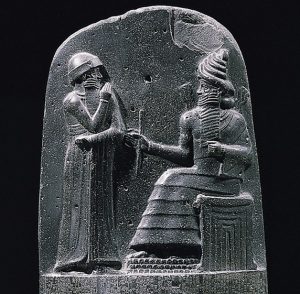 Atop the famous stele containing Hammurabi’s Code is a depiction of Hammurabi and Shamash, the Sun god, who was also the Babylonian god of justice. The swirling headdress of Shamash in this image might seem merely decorative, but in fact it possesses a dynamic meaning.
Atop the famous stele containing Hammurabi’s Code is a depiction of Hammurabi and Shamash, the Sun god, who was also the Babylonian god of justice. The swirling headdress of Shamash in this image might seem merely decorative, but in fact it possesses a dynamic meaning.
At the back of Shamash’s neck is an oval object that has no obvious purpose. It appears to be attached to the coiled shape of the headdress, as if it were the head of a serpent. But why would Shamash be wearing a serpent on his head?
To answer this question, one must become aware of the compelling new evidence for and reinterpretation of
Tags: Babylonia, Bronze Age catastrophes, Hammurabi, Inanna, Ishtar, Khafajeh, Shamash, Velikovsky, venus

Decades of meticulous investigation have revealed many features of the 1st Century BC Antikythera Mechanism, a portable planetarium that demonstrated the motion of celestial objects. But we must question researchers’ conclusion that the Mechanism incorrectly represented the orbit of Mars, in particular, by roughly 30 degrees during retrograde motion.
This discrepancy seems anomalous in a sophisticated device that otherwise exhibited a much smaller range of error. So maybe there is some other explanation.
Tags: ancient astronomy, Antikythera Mechanism, Bronze Age catastrophes, Immanuel Velikovsky, Jupiter, Mars, planetary science, Revised Venus Theory, venus
 Sekhmet (“The Mighty One”), lioness goddess of ancient Egypt, spread terror with her bloody rampages. Yet she became the protector of kings and a favorite personal goddess of millions of Egyptians.
Sekhmet (“The Mighty One”), lioness goddess of ancient Egypt, spread terror with her bloody rampages. Yet she became the protector of kings and a favorite personal goddess of millions of Egyptians.

 What reality lay behind ancient China’s flood legends? Who was the Yellow Emperor? Who was Archer Yi, what was his vermilion bow, how did he shoot down nine of ten suns, and why were there ten suns in the first place?
What reality lay behind ancient China’s flood legends? Who was the Yellow Emperor? Who was Archer Yi, what was his vermilion bow, how did he shoot down nine of ten suns, and why were there ten suns in the first place?
 If we can interpret certain ancient myths correctly, they could lead us to more accurate and penetrating views of the history of the Earth and the solar system. They might teach us about the forces at work and explain anomalies bequeathed to us by a long-hidden past. But how can we interpret these myths, the products of minds so far removed from ours? How do we know which interpretation is correct, if any? Are we doomed to speculate without ever achieving certainty?
If we can interpret certain ancient myths correctly, they could lead us to more accurate and penetrating views of the history of the Earth and the solar system. They might teach us about the forces at work and explain anomalies bequeathed to us by a long-hidden past. But how can we interpret these myths, the products of minds so far removed from ours? How do we know which interpretation is correct, if any? Are we doomed to speculate without ever achieving certainty? The Theory of the Reversing Earth was a key component of Immanuel Velikovsky’s Venus theory in which he contended that close passages of Venus caused Earth to topple over four times during the Bronze Age catastrophes. Now we have a Revised Venus Theory that corrects inadequacies of the original theory and provides a cause of the inversions as well as approximate dates (2200, 1628, 1210, and 820 BC), an array of new evidence, and a link to the great mass extinctions of prehistory. Viktoria Nagudi interviews Kenneth J. Dillon of Scientia Press. 9 Likes, 0 Dislikes.
The Theory of the Reversing Earth was a key component of Immanuel Velikovsky’s Venus theory in which he contended that close passages of Venus caused Earth to topple over four times during the Bronze Age catastrophes. Now we have a Revised Venus Theory that corrects inadequacies of the original theory and provides a cause of the inversions as well as approximate dates (2200, 1628, 1210, and 820 BC), an array of new evidence, and a link to the great mass extinctions of prehistory. Viktoria Nagudi interviews Kenneth J. Dillon of Scientia Press. 9 Likes, 0 Dislikes. In his Worlds in Collision (New York: Macmillan, 1950), Immanuel Velikovsky argued that Venus emerged as a red-hot comet from Jupiter and passed Earth every 52 years, causing the Bronze Age catastrophes, before settling into its current orbit. His claim set off a controversy in which his theory was rejected and stigmatized. But over the years, new findings have changed the picture. Here are eight new reasons to accept a Revised Venus Theory.
In his Worlds in Collision (New York: Macmillan, 1950), Immanuel Velikovsky argued that Venus emerged as a red-hot comet from Jupiter and passed Earth every 52 years, causing the Bronze Age catastrophes, before settling into its current orbit. His claim set off a controversy in which his theory was rejected and stigmatized. But over the years, new findings have changed the picture. Here are eight new reasons to accept a Revised Venus Theory.
 n and scientific researcher Kenneth J. Dillon explains his The Martian Theory of Mass Extinctions. For most of the past 4 billion years, the orbits of Mars and Earth were more eccentric than at present, and they intersected. The closest approaches of Mars led to the great mass extinctions of prehistory, while more distant approaches might account for many minor extinctions as well. The theory shows why the extinctions were serial events, why they differed in size, how they shaped the surface of Mars, and what made them so terrifically devastating. For further information, see https://www.scientiapress.com/extinctions.
n and scientific researcher Kenneth J. Dillon explains his The Martian Theory of Mass Extinctions. For most of the past 4 billion years, the orbits of Mars and Earth were more eccentric than at present, and they intersected. The closest approaches of Mars led to the great mass extinctions of prehistory, while more distant approaches might account for many minor extinctions as well. The theory shows why the extinctions were serial events, why they differed in size, how they shaped the surface of Mars, and what made them so terrifically devastating. For further information, see https://www.scientiapress.com/extinctions.

